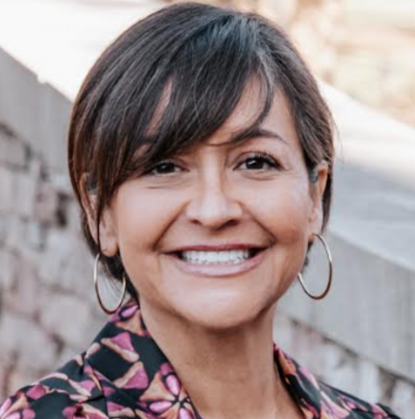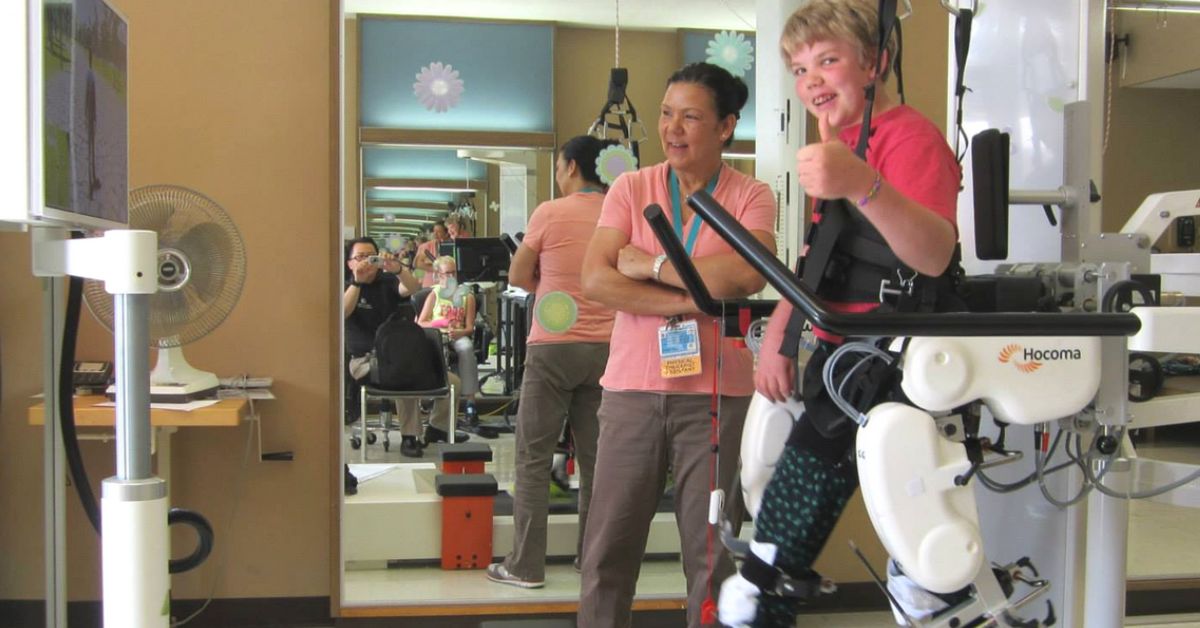Each summer from 2014 through 2019, we collaborated with Rancho Research Institute on an important research study: Robocamp. This was an intensive rehabilitation camp for children after hemispherectomy surgery. We wanted to understand whether children who had hemispherectomy surgery would benefit from intensive therapy even years after surgery.
This month, in a peer-reviewed paper published in the Journal of Clinical Neuroscience, the results of this study were finally published.
About the participants
18 children and young adults participated in Robocamp. They ranged in ages from 10- to 26-years-old, and had surgery anywhere from one year to 17 years before camp.
In order to participate in the study, their seizures had to be well-controlled, they needed to be able to walk at least 32 feet without someone’s assistance, and they had to be able to focus for at least 30 minutes at a time.
The participants had different diagnoses that led to their seizures, including Rasmussen’s encephalitis, Sturge-Weber syndrome, cortical dysplasia, hemimegalencephaly, prenatal stroke, and other conditions.
What they did
All participants received a robotic rehabilitation program for two weeks. For four days in a row each week, they received three hours of daily robotics-assisted therapy as follows:
- one hour of Lokomat;
- one hour of inMotion ARM; and,
- one hour of inMotion ANKLE.
They also participated in fun activities including recreation therapy, adaptive yoga, virtual reality occupation therapy, occupational therapy targeting activities of daily living, and fun activities like arts and crafts.
This video gives you a peek into what they did:
What were the results?
At the end of the research study, when asked to walk as far as possible during a 6-minute walk test, the participants reached an average distance of 95 feet farther than they did before camp.
When their upper extremities were assessed using the Fugl-Meyer assessment, they experienced an average increase in function of over 13%.
In a related study, researchers studied the brains of five of the participants using magnetic resonance imaging. They found that there was an increase in the gray matter thickness in the part of the brain that controls the hand.
Intensive rehab changed their brains! (See Hazany, S., Mann, D., Bagrodia, N. et al. Cortical change after a 2-week novel robotic rehabilitation program in children with prior hemispherectomy: pilot imaging study. Childs Nerv Syst (2022). https://doi.org/10.1007/s00381-022-05664-8.)
Finally, the participants also showed an improvement in their confidence, including their ability to complete suggested activities and demonstrate continue performance enhancement, as did their parents.
“What is clear is that rehabilitation programs result in clinically meaningful improvement in the function, lifestyle, and confidence of post-hemispherectomy children and should be an integral part of their post-surgical care.”
Saman Hazany, Neelesh Bagrodia, Remy Chu Jr, Susan Shaw, Results of a 2-week novel robotic rehabilitation program in 18 children with prior hemispherectomy, Journal of Clinical Neuroscience, Volume 108, 2023, Pages 6-12, ISSN 0967-5868, https://doi.org/10.1016/j.jocn.2022.12.011.
Our gratitude to the entire team at Rancho Research Institute for their tireless work on this project.
We’re one step closer to establishing standards of rehabilitation care for this population.
I hope this research paper helps you advocate for insurance coverage for intensive therapy programs for your child even years after surgery. For information about appealing insurance denials, go to www.patientadvocate.org.
about the author

Monika Jones, JD, is our founder and executive director. Her first son, Henry, had a modified lateral hemispherotomy, revision surgery, then true anatomical hemispherectomy to stop seizures caused by total hemimegalencephaly. She is also the principal investigator of the Global Pediatric Epilepsy Surgery Registry, the only parent-reported data collection to understand the developmental trajectory after pediatric epilepsy surgery. You can read her research works at orcid.org/0000-0001-6086-3236.
Upcoming Events
Recent Posts
Stay Connected



